Knotted Vs Braided Rolls: What's The Difference?
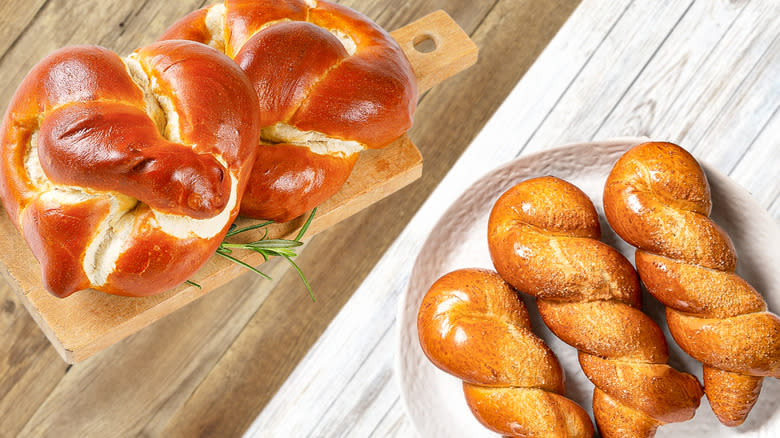
While loaves of bread are generally baked in round or oblong shapes, rolls have more flexibility in appearance due to the size of the hand-held pieces. Bun and roll shapes can vary from the five folds of the kaiser roll to the ring of a bagel. Twisting, braiding, knotting, or rolling the dough can all lend unique touches to grazing tables and buffet spreads, and your careful details can turn an average bread recipe into a marvel that is worthy of the gram.
Once you have rolled out dough to make your choice of roll recipes, you have options when it comes to fashioning the shapes and sizes of the pieces you intend to bake. Knotted and braided rolls both offer aesthetically pleasing presentations that can be served any time of the day. Perfect for fancy dinner rolls, they both also answer cravings for homemade comfort simply served warm for lunch or a snack, just toasted and generously buttered. So, if they can be served interchangeably, what is the difference between the two?
Read more: 12 Popular Grocery Store Butter Brands, Ranked
What Are Knotted Rolls?
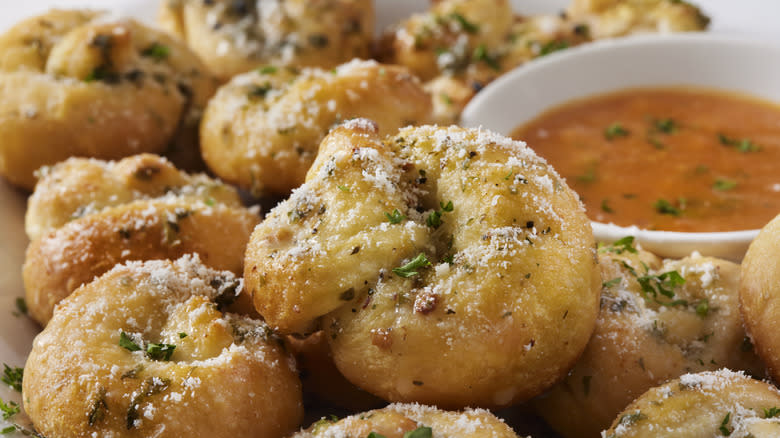
Knotted rolls may look complicated on a platter, but the design couldn't be easier to make. To assemble knotted rolls, bakers must separate pieces of dough and form long fairly thick strands. Each of these is then tied into shapes that look like knots of rope. Just use your fingers to loop the ends in a tied-up fashion, as if you were doing the first knot when tying shoelaces, then tuck the ends underneath. But feel free to create your own method of knotting. Knotted rolls can be washed with butter, seasoned with herbs and spices, or speckled with sesame seeds and flaky sea salt to suit your palate and the likings of your dinner guests.
Once baked and golden, these easy-to-pick-up rolls can be served alongside main courses. Recipes like cheesy garlic knots with a sprinkling of caraway seeds are close to irresistible when served warm, fresh out of the oven. Whatever flavors you add, the shape of the knotted roll offers a texturally satisfying combination of a firm exterior and chewy middle.
What Are Braided Rolls?
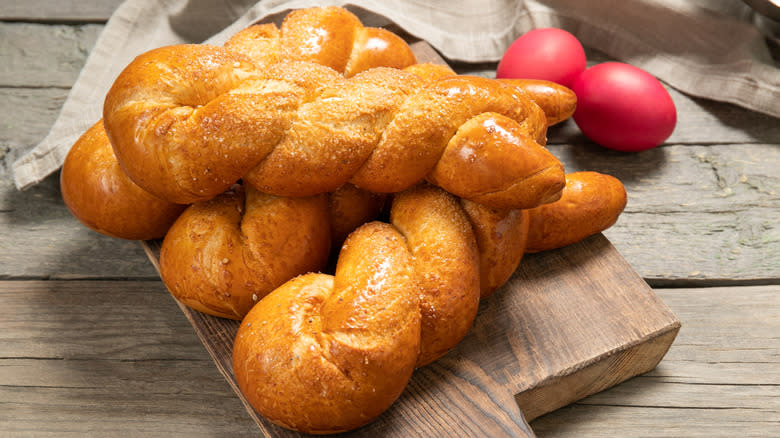
While knotted rolls only require one strip of dough to assemble, braided recipes require a bit more focus. To make braided rolls, multiple stands of dough are usually woven together to create the desired effect. Anyone who has ever had to braid hair will have an advantage here. It's usually done with three strands, with each edge piece being folded over the middle piece in turn. However, some braided rolls are more like twisted rolls and are more simply arranged with two pieces twisted over each other. Either way, bakers need to pay close attention as they make the folds to achieve a uniform appearance and an intricate and elegant outcome. After a few practices, however, it isn't unreasonable to find yourself settling into a quiet rhythm that will be well rewarded as soon as baked braided rolls are taken out of the oven.
Though making braided designs with bread may not be as complicated as folding leaves out of dough, the process does take practice to get right. Perhaps start with some small test pieces of dough first. Once served warm with creamy pats of butter, any frustration at nailing the right combination of folds will quickly dissipate, as the enjoyment of pulling apart freshly baked bread heightens the dining experience.
The Shape Of The Rolls
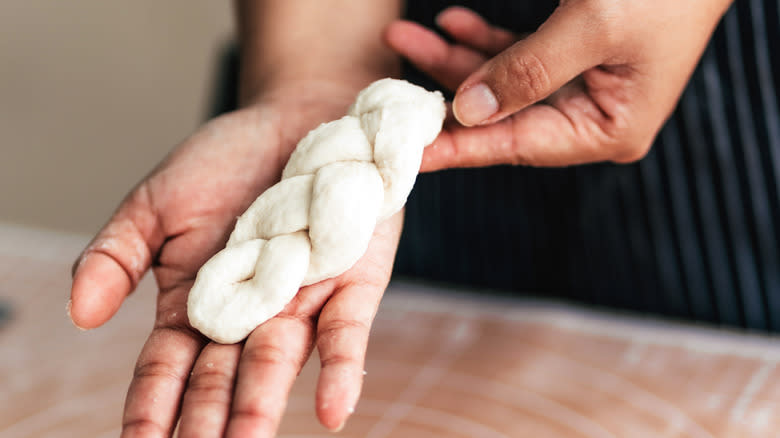
Braided and knotted rolls can quickly be identified by their shape. Knotted rolls are usually more compact than the oval woven layers of braided rolls. More circular in appearance, knotted rolls can be made in smaller sizes for convenient one-per-person distribution. They're good for dipping into sauces and soups. Braided rolls are usually longer, as the pieces that are layered on top of each other must be secured at both ends of the roll so that the whole thing stays together during the baking process. Although some are small enough for one each, they're also good for sharing between two.
Both braided and knotted rolls can be made from different dough recipes. Whether created with savory flavors like garlic, cheese, or dried herbs, or left plain, both styles of dinner rolls look good when washed with egg or butter to achieve a shiny finish once out of the oven. Once a baker has become familiar with both styles, the ability to experiment with different flavors and dough recipes can be fun.
The Significance Of Shaped Bread
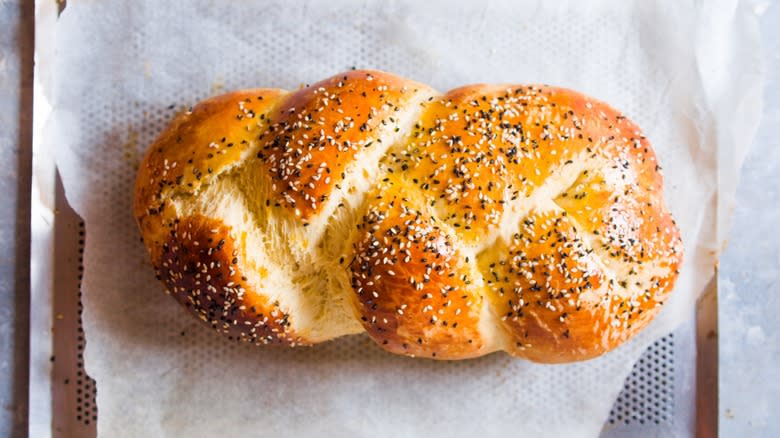
After mastering the process of making standard rolls, it's time to set to work on a more complicated presentation to serve at the next meal. To achieve unique appearances in knotted and braided rolls, plan a specific shape in mind before working with dough. Test what you're going to do with a smaller piece of dough that can be reworked if you get things wrong, then set to work properly. Knotted rolls can be quickly made with one strip of dough, and braided rolls call for two, three, or even more sections of dough that must be plaited together to achieve the desired effect.
In some communities, the number of braids has symbolic significance, in challah bread, for example. Here, three braids represent truth, peace and justice. However, braided bread has been around for centuries so exact meanings can depend on situation and region. One story from Switzerland suggests that braided bread represents the hair of a wife, and is buried with a dead husband. Similarly, the history of knotted rolls is also hazy, yet some culinary historians point to the Italian recipe for pane di Altamura for the origin, which is said to have first been eaten in 37 B.C. Regardless of the origins or the reasons for fashioning bread into a specific shape, the added aesthetic pleasure of a purposefully designed bread roll can elevate your dinner party presentation into a meal worthy of praise.
Read the original article on Tasting Table.

